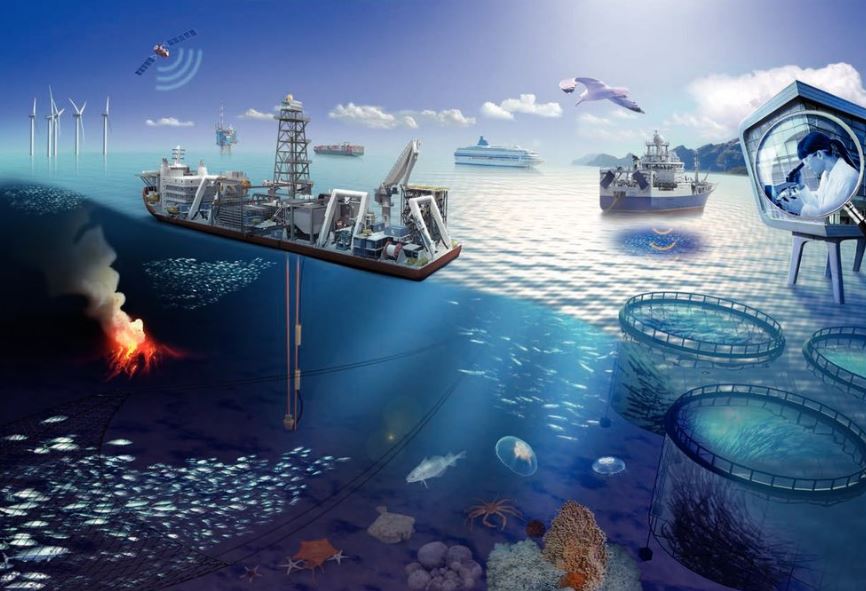Font size:
Print
Global Sea Ice Cover Hits Record Low
Context:
The extent of global sea ice has hit a new record low, with the combined Arctic and Antarctic sea ice dropping to 15.76 million sq km over the five days leading up to February 13, 2025.
More on News
- This surpasses the previous record low of 15.93 million sq km observed in January-February 2023, according to data from the US National Snow and Ice Data Center (NSIDC), analysed by the BBC.
- Scientists attribute the record-breaking sea ice loss in 2025 to a mix of warmer air, warmer ocean temperatures, and ice-breaking winds.
- The Arctic is expected to be free of summer sea ice before 2050, according to the UN Intergovernmental Panel on Climate Change (IPCC).
Understanding Sea Ice and Its Role
- Sea ice is the free-floating ice in the polar regions, distinct from icebergs, glaciers, ice sheets, and ice shelves, which form on land.
- It plays a crucial role in regulating Earth’s climate by reflecting sunlight and preventing ocean heat from warming the atmosphere.
- The decline in sea ice can lead to rising global temperatures and disrupt oceanic circulation.
Current State of Sea Ice Decline
- Arctic sea ice is at its lowest recorded extent for this time of the year.
- Antarctic sea ice is also approaching record-low levels, based on satellite records dating back to the late 1970s.
- Since the late 1970s, NSIDC estimates that 77,800 sq km of sea ice has been lost per year.
Long-Term Trends
- Between 1981 and 2010, Arctic sea ice extent in September (its annual minimum) declined at a rate of 12.2% per decade, as per NASA.
- The Antarctic initially experienced a slight increase in sea ice until 2015. However, between late 2014 and 2017, the Antarctic lost 2 million sq km of sea ice—four times the size of Spain (Copernicus Marine Service).
- In 2023, Antarctic sea ice reached a historic low, over 2 million sq km below normal levels—an area 10 times the size of the UK.
- While 2024 saw a slight recovery, the sea ice extent was still 1.55 million sq km below the 1981-2010 average maximum.
Reasons Behind the Decline
- Antarctic Factors:
-
- More vulnerable to winds: Unlike the Arctic, Antarctic sea ice is surrounded by open ocean, making it more mobile and thinner.
- Warmer air and ocean: Higher temperatures during the southern hemisphere summer (December-February) caused ice shelves (edges of the Antarctic ice sheet) to melt.
- Ongoing ocean warming: This warming trend is worsening the situation, according to Tom Bracegirdle, a scientist at the British Antarctic Survey.
- Arctic Factors:
-
- Delayed freezing: The Hudson Bay (Canada) took longer to freeze due to unusually warm ocean temperatures.
- Storm-related ice breakup: The Barents Sea (off Norway and Russia) and the Bering Sea (between Alaska and Russia) saw strong storms that broke apart fragile ice.
- Thin, fragile ice: Arctic sea ice has become thinner over the years, making it more susceptible to breakage.
- Warmer air: Regions such as Svalbard, Norway, experienced above-average temperatures, contributing to ice loss.
Consequences of Shrinking Sea Ice
- Increased Global Warming: Less ice means more exposed ocean, which absorbs more solar radiation, accelerating global temperature rise. This is why polar regions are warming faster than the rest of the world.
- Disruption of Ocean Circulation: Freshwater from melting ice reduces ocean salinity, weakening the global ocean conveyor belt (which regulates climate). This could disrupt marine ecosystems, slow down ocean currents, and destabilize ice shelves.
- Severe Climate Impacts: A slowdown in ocean circulation affects weather patterns globally, increasing the risk of extreme storms, droughts, and heatwaves.
Implications for Wildlife and Climate
- Loss of sea ice affects polar wildlife, such as polar bears and penguins, which depend on the ice.
- The natural cooling effect of sea ice has already been reduced by 14% since the 1980s.
- Loss of sea ice modifies the global climate system, impacting ocean currents and potentially altering the great ocean conveyor that helps distribute heat and maintain climate stability, especially in regions like North-West Europe.


